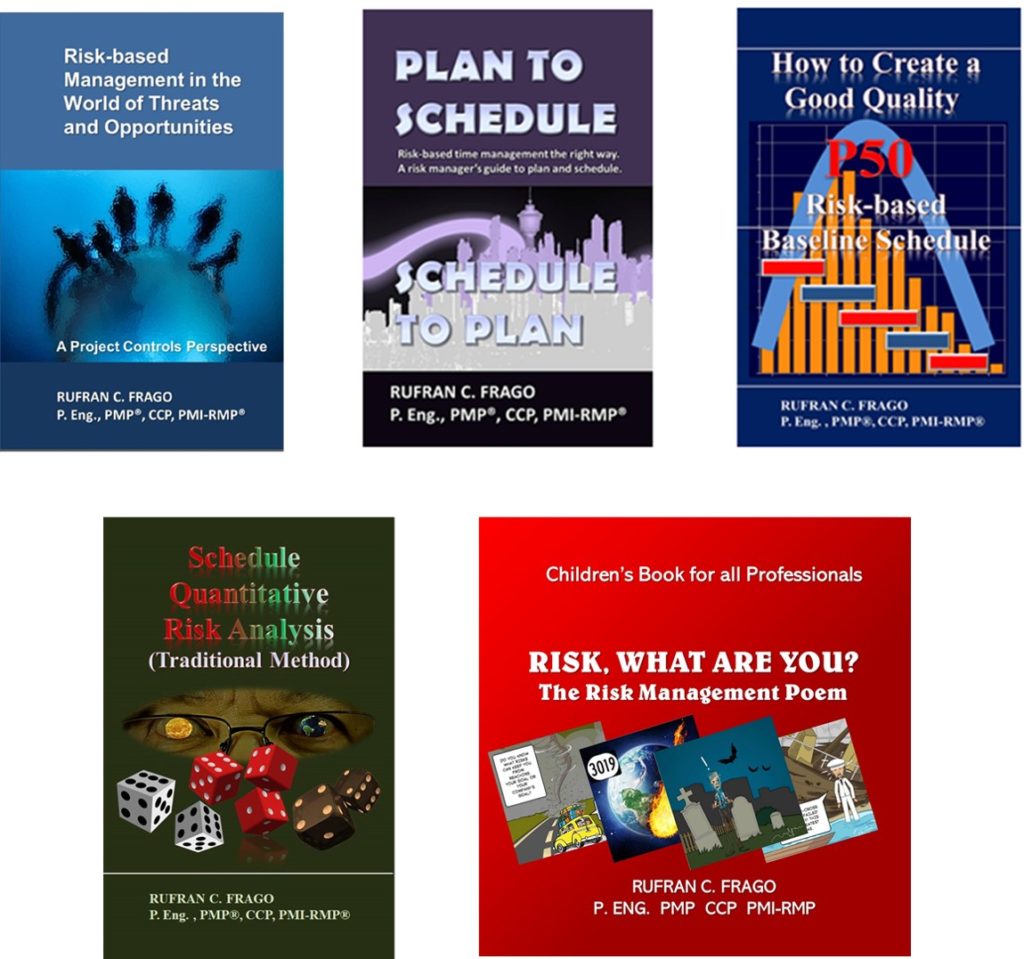Preparing for project’s Schedule Quantitative Risk Analysis is like painting a wall. The wall preparation takes the longest before the final paint coat is applied. The last layer becomes as essential as sanding debris and covering all holes with joint compounds. Up to 80 percent of the Schedule Quantitative Risk Analysis (SQRA) effort is preparing the risk model. The remaining twenty percent (20%) is on the proper use of the tool, e.g., OPRA, previously called PertMaster, Deltek Acumen Risk, and others.
If the schedule is not of good quality and not modeled correctly, then the 80% effort amounted to nothing. The resulting assessment can become unreliable if not all wrong that it can derail the project!

SQRA preparation tips
- Identify the right stakeholders and resources who will provide the duration ranges and critical risk inputs.
- Arrange practical risk workshops. Choosing the proper venue sets the tone for a serious, goal-oriented workshop. Risk facilitators must not take the risk-facilitated session for granted
- Holding one-on-one or group interviews.
- Ensure that the schedule is of high quality.
- Proper use of the risk analysis tool.
- Relevant driving planning documents must be ready as references three (3) to four (4) weeks before the quantitative risk analysis workshop. These are critical documents that will provide the necessary information in formulating a dependable result.
• List of schedule’s key and critical milestones.
• Participative planning minutes of meeting and attendance sheet, including action plans. These documents ensure the right stakeholders were involved in the planning process and support the developed schedule.
• Prepare the Input Sheet, also called risk interview worksheet. This typical worksheet designed for a traditional duration ranging and risk analysis review helps a lot. It provides a great perspective on why the subject matter expert (SME) and select stakeholders provided the 3-point estimate values. The table contains the three-point inputs of the discipline subject matter experts on individual activity and relevant work packages. It gives perspective as to why experts (interviewees) gave the values they have provided. A note column on this same sheet must briefly explain what risks drive the activity. If it is because of pure estimating uncertainty, the column field corresponding to the activity remains blank.
• Get the native file of the deterministic schedule. If you use Primavera P6, then save the XER or XML (both Primavera native files).
The files are preferred transmitted via e-mail over a file located in a shared database or folder. This file contains the schedule for risk analysis. Submission is best coursed through an official e-mail to document the official transmittal. The native files are vital, especially when dealing with joint venture partners, vendors, consultants, contractors, and subcontractors. The subject schedule sample is practically unchanged by getting the XER, MPP, or PLAN files conveyed officially. If any dispute arises regarding the validity of the original deterministic schedule, the transmittal document will be the proof and deciding factor. In this way, there will be no confusion as to what file was analyzed. The file sent through e-mail is an official submission. The project team must participate in the review process and give their buy-in before any schedule risk quantification starts.

• An approved Basis of Schedule or BOS (Schedule Basis & Methodology). The BOS holds collated data from where the schedule bases its information. For example, it has key milestone dates, work breakdown structure hierarchy, coding keys, calendar bases, resource bases, others.The project submits the BOS first, before the schedule corresponding to it.
• A schedule quality check report based on your company’s or project’s established Minimum Schedule Quality (MSQ). If these are not yet available in your organization as benchmarks, then it is about time to create one.
• Approved Estimate Summary
• Approved Basis of Estimate
• Approved Detailed Estimate
• Latest and updated Risk Register
• Approved and updated Project Charter
• Latest and updated Project Execution Plan
• Project Kick-off Presentation
• Latest Project Monthly Report
• Assumption Log and Constraint Log

The responsible project risk manager must ensure that the scheduled quantitative risk analysis process follows the governing standards and procedures of the project organization. A change management notice or deviation notice covers any substantial deviation from the standard approaches. Documentation is essential in managing change and holds much value when evaluating the subsequent results. It is also a critical record during future schedule benchmarking initiatives.
Many in the engineering and construction industry think that the tool is but a push of a button, and there’s not much intelligent thought or skills needed to come up with a result.
Managers typically have a strong bias against tool experts, short of calling them tool-centric ignoramus who does not know what risk-based management process is. It is funny that despite that perception, they do call the services of these experts every time.
This self-defeating perspective makes project managers miss out. They will come out of the engagement without anything of value.
The truth is, risk-based processes are as important as the tool. The tool is the vehicle that carries the process into completion.
Somebody’s inability to operate the tool the right way will ultimately fail the process. Therefore, I always advise, “we must use the tool according to the tool’s right!”
It will render all the preparation, data gathering techniques, and in-depth project discussions, regardless of how conscientiously done, inadequate or useless!
Performing a Monte Carlo or a Latin Hypercube simulation is the core of SQRA in OPRA. Going through the motion of quantification from importing to report generation without understanding how tool settings and flawed data translation affect the result.
I have reviewed several risk analysis results in my professional life that were disturbingly flawed because an unqualified individual handled Primavera (P6) and OPRA. Wrong assessments and unwanted consequences result in wasted hours pursuing efforts that won’t work.
Due to flawed risk assessment reports, projects might try to start activities outside their ideal time frame or embark on methodologies too challenging to execute, if not impossible.
False critical paths generated might create unwarranted concerns, put all in panic mode, and confuse the planning and execution team putting out a fire that was not there.
A schedule accepted for risk analysis that dramatically deviates from the project execution plan creates troubling scenarios that keep project managers reasonably on edge.
One must not forget the cardinal rule that the schedule is a reflection of the plan.
If the construction execution plan violates the overall execution strategy, the project is a good candidate for failure. Everyone should be on deck and looking at the same goal if it is to succeed.
When a risk analyst gets the scheduled sample to be analyzed, he must ensure that the schedule quality meets the accepted criteria and best practices.
About the Author
Rufran C. Frago is the Founder of PM Solution Pro, a Calgary consulting, product, and training services firm focusing on project and business management solutions. He is passionate providing advice, mentorship, education and training through consultation, collaboration, and what he uniquely calls, student-led training.
BOOKS AUTHORED BY RUFRAN FRAGO
- Risk-based Management in the World of Threats and Opportunities: A Project Controls Perspective.ISBN 978-0-9947608-0-7.Canada
- Plan to Schedule, Schedule to Plan.ISBN 978-0-9947608-2-1.Canada
- How to Create a Good Quality P50 Risk-based Baseline Schedule.ISBN 978-0-9947608-1-4.Canada
- Schedule Quantitative Risk Analysis (Traditional Method).ISBN 978-0-9947608-3-8.Canada
- RISK, What are you? The Risk Management Poem: Children’s Book for all Professionals.ISBN 978-0-9947608-4-5 (Canada)

